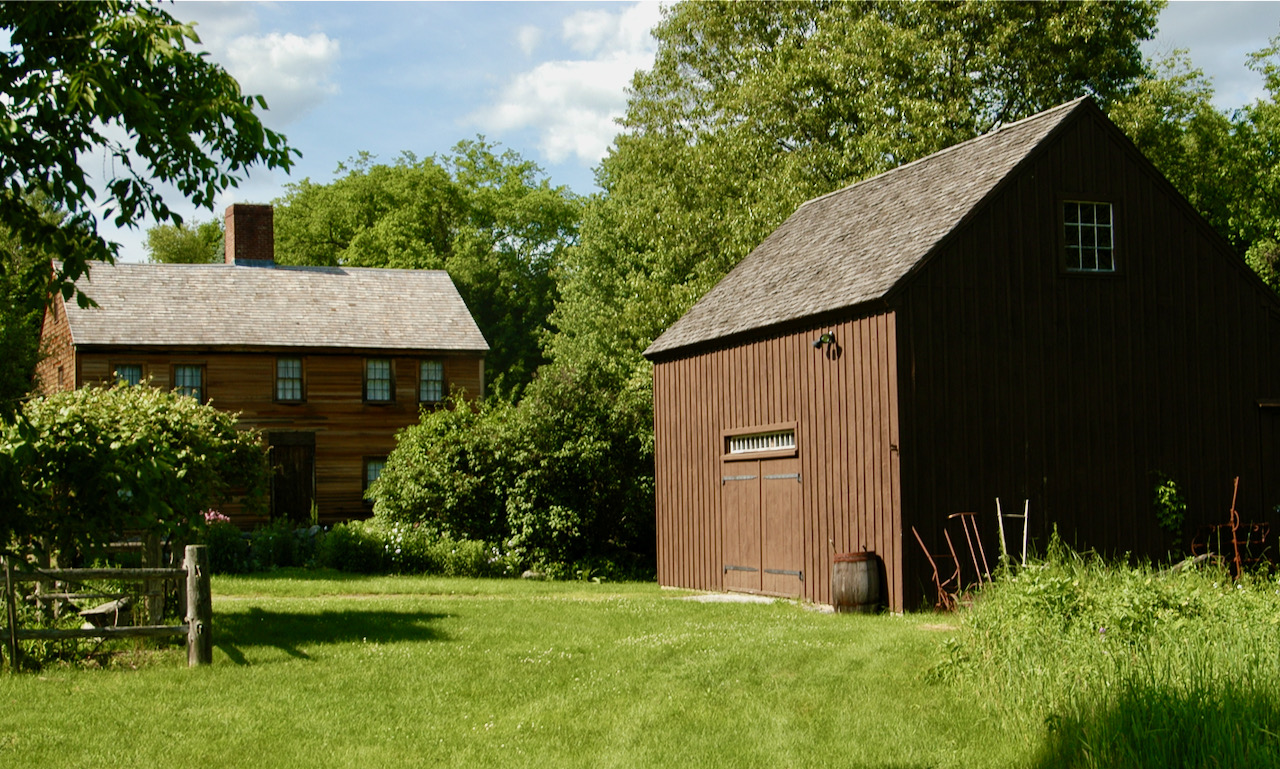Land ownership began in 1637, when the Massachusetts Great and General Court granted Governor John Winthrop about 1500 acres, from Billerica, in what is now Bedford, Massachusetts. In 1664 the Governor’s grandson, having inherited the land, transferred it to house wright Job Lane (c.1620-1697) in exchange for a house that Lane built him in Connecticut. His oldest grandson, also named Job Lane (1689-1762), inherited 280 acres of the land for a farm. Around the time of his marriage (to Martha) in 1713, he built this house at the beginning of the 18th century. It was just the east half of the house we see today: a saltbox consisting of a great hall, kitchen, and storage room downstairs; a bedchamber and garret above; and a high attic under the roof. Job Lane was one of the founders of Bedford and a lieutenant in the militia. He was also a church deacon, and so we know him as Deacon Job Lane. Enlarged by a descendant, the two-and-one-half-story timber-frame structure is one of the oldest houses in Bedford. The home contains murals by American painter Rufus Porter (1792–1894).
The Dutton family succeeded the Lanes and lived in the house for 125 years. Lillian Dutton, the “Herb Lady,” was the last person to live in the house and is celebrated with the Lillian Dutton Memorial Herb Garden. The Bedford Garden Club maintains the herb garden.
In 1973, the Town of Bedford bought the house from Town Historian Louise K. Brown and charged the Bedford Historic Preservation Commission to oversee it. In 1978, the Friends of the Job Lane House, Inc. was formed to assist in the day-to-day operation of the museum. The museum opened to the public in 1983 and today conducts Open House Tours on the 2nd and 4th Sundays, May through October, featuring 18th century demonstrations that include spinning, weaving, painting, basket making, and chocolate demo, to name a few. Through the efforts of the Friends, a 1720s style timber-frame barn was added in 1993 with an old-fashioned barn raising.
Description and photo courtesy of the Job Lane Farm Museum

